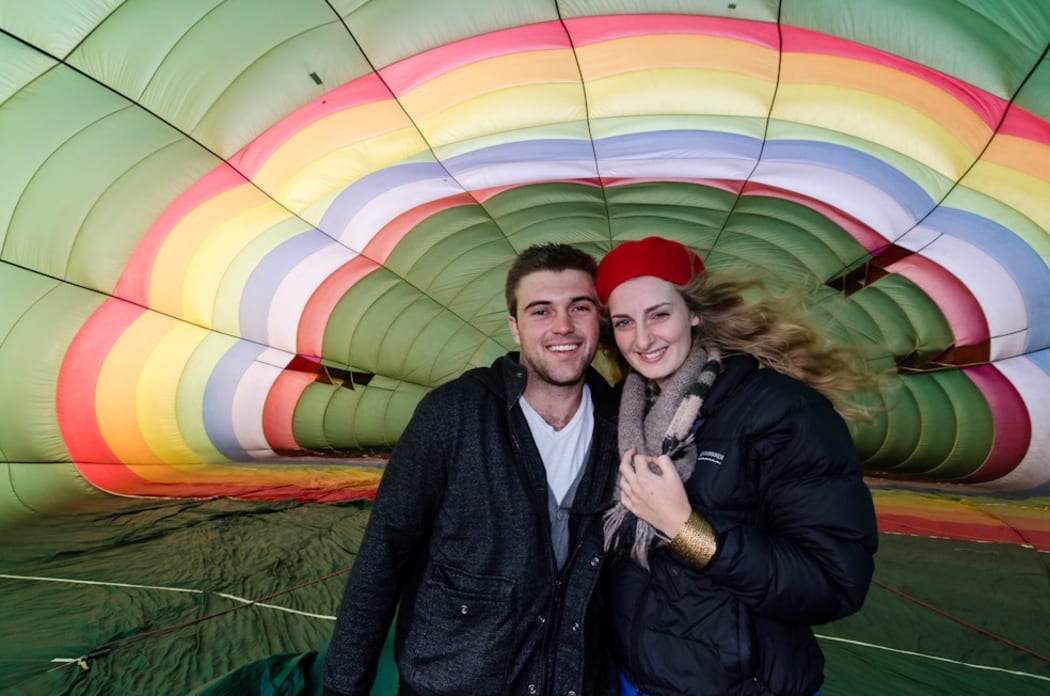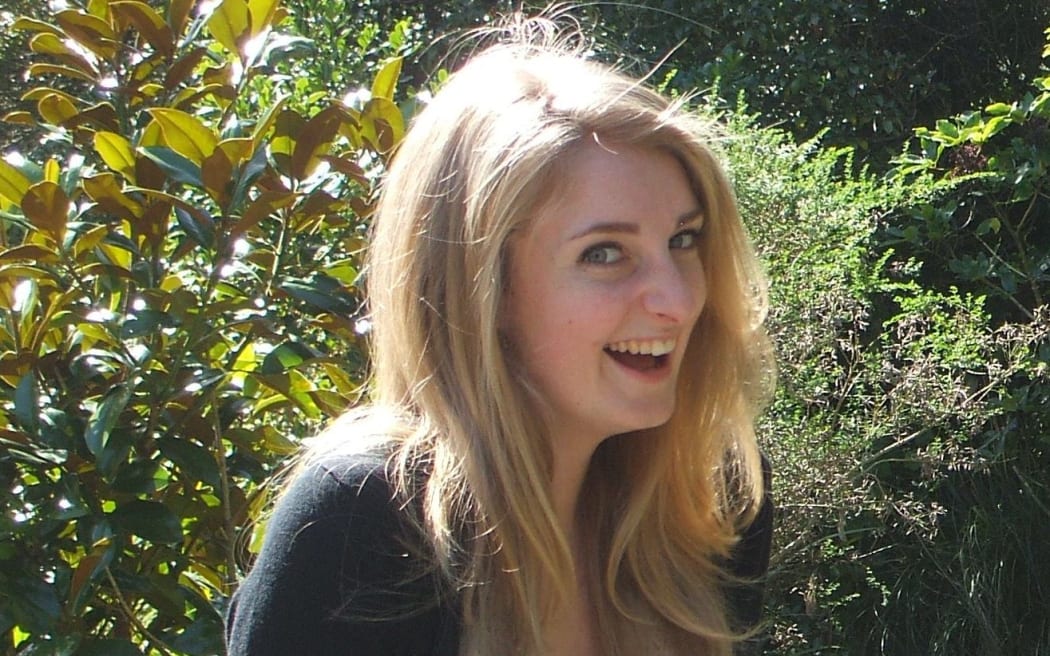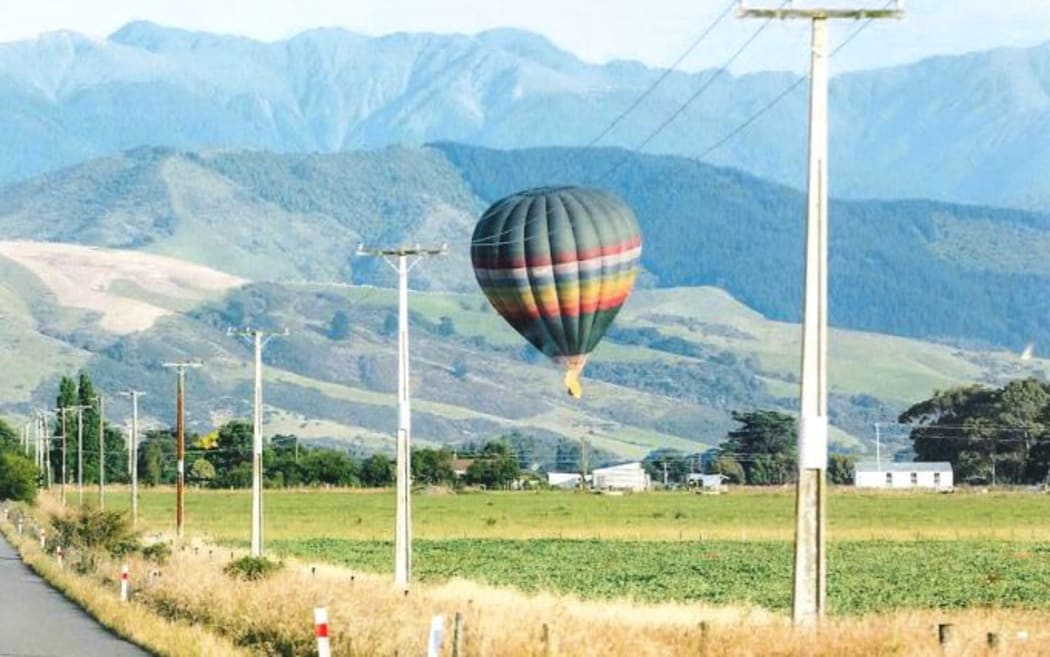The 11 people who died in the Carterton balloon tragedy would likely have lived had its cannabis-using pilot opted to "rip out" when it hit power lines, the Coroner has found.

Chrisjan Jordaan and Alexis Still. Photo: Geoff Walker Photography
The coroner's key findings:
- Pilot had expired medical certificate
- Pilot had cannabis in his blood
- Pilot made a gross error in trying to out-climb the power line
Pilot Lance Hopping and passengers Alexis Still, Chrisjan Jordaan, Stephen Hopkirk, Belinda Harter, Denise Dellabarca, Desmond Dean, Ann Dean, Howard Cox, Diana Cox and Valerie Bennett died on 7 January 2012 when the balloon they were in became trapped in power lines near the Wairapara town of Carterton.
The power lines arced when they touched and the balloon burst into flames before shooting upwards, then plummeting to the ground.
Ms Still and Mr Jordaan jumped from the basket while it was about 20 metres from the ground but died at the scene from their injuries; the other nine on board were dead by the time the basket hit the ground.
Coroner Peter Ryan today released his report into the tragedy in which he said 53-year-old Mr Hopping should never have been flying as his medical certificate had expired and he had used cannabis.
It was possible that was why he tried to out-climb the power lines once the balloon became caught rather than doing a "rip-out", in which the balloon was rapidly deflated.
"Had he done so...it appears there would have been a significant chance that all of these lives would have been saved," Mr Ryan said.
That was because the balloon would have rapidly descended from the 10-12 metre-height at which it hit the power lines, rather than the 110-150 metres it climbed to before plunging.

Cartertoon balloon tragedy victim Alexis Still. Photo: Supplied
"For an experienced and competent balloon pilot, Mr Hopping's decisions that day seem to be inexplicable.
"Therefore, it is possible that his decision-making ability was impaired due to the carry-over effect of cannabis which was found in his blood at post-mortem."
Mr Hopping had used cannabis at least once a week for 15 years but did not smoke tobacco.
Relatives of one of the victims told the inquest they had seen Mr Hopping smoking on a balcony overlooking the launch site before the flight and while Mr Ryan found it unlikely he had been smoking cannabis then, "it is possible that Mr Hopping did smoke a cannabis cigarette earlier that morning".
Mr Ryan made 19 recommendations in his report, including that the Civil Aviation Authority (CAA) require mandatory drug and alcohol testing for adventure aviation pilots, that it encourage third parties to notify the authority of any concerns about a pilot's medical certificate and that medical examiners be required to notify the authority when an expired certificate is not renewed.
As well, the Civil Aviation Act 1990 should be amended to enable the authority or police to undertake random drug and alcohol testing of adventure aviation pilots, and that tougher sanctions be considered for positive tests.

The coroner has released four photos of the Carterton hot-air balloon tragedy. Photo: SUPPLIED
It also recommended balloon passengers should be instructed to look out for wires or poles and alert the pilot to them, and that a second crew member specifically train in the "rip-out" system should be on board flights.
The Transport Accident Investigation Commission released its final report into the tragedy in October 2013, in which it also recommended random alcohol and drug testing.
CAA director Graeme Harris said it had advocated for alcohol and drug testing in aviation since 2005, and that there had been improvements to its adventure aviation safety regulation since the tragedy.
"The Coroner's recommendation for alcohol and drug testing in aviation is in line with the CAA's long-standing position on drug and alcohol use," he said.
"We have zero tolerance for drug and alcohol impairment in aviation and support any moves Government may make to mitigate this risk through stronger regulation."
Its rules meant operators had to have a drug and alcohol programme acceptable to the CAA; any regime which did not require regular testing of staff involved in operations would not be accepted.
The CAA would consider the recommendations carefully and make appropriate changes to improve safety where it could, Mr Harris said.
Minister of Transport Simon Bridges said the Government had taken the matters raised seriously and he would ask his Ministry and the Civil Aviation Authority to consider the report.





